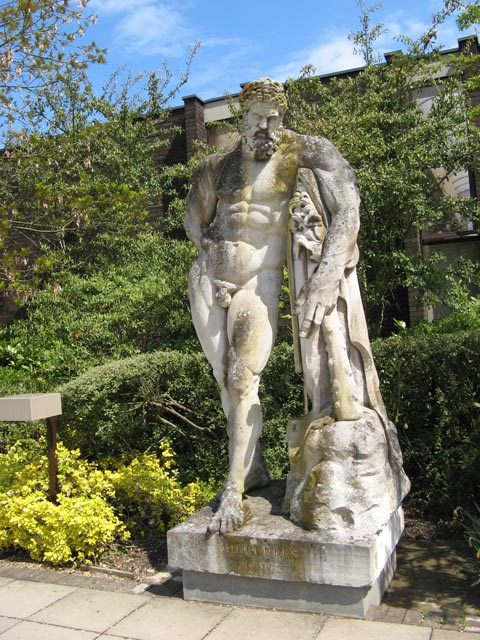Statue of Hercules
Introduction
The photograph on this page of Statue of Hercules by Jonathan Wilkins as part of the Geograph project.
The Geograph project started in 2005 with the aim of publishing, organising and preserving representative images for every square kilometre of Great Britain, Ireland and the Isle of Man.
There are currently over 7.5m images from over 14,400 individuals and you can help contribute to the project by visiting https://www.geograph.org.uk

Image: © Jonathan Wilkins Taken: 12 May 2010
This statue is a copy of the 'Farnese Hercules', a Roman statue of 1st or 2nd century, by Charles Harriott Smith in 1851. It was carved for the Geological Museum in London from a single, 15-ton block of stone quarried at Portland in Dorset. After 20 years of public display the statue was deemed offensive to Victorian propriety, and Hercules' genitals were removed (and stored) and replaced by a fig leaf. On the removal of Hercules to Keyworth in 1977 the decision was taken to restore him to 'a complete and entire state', although he was originally hidden in an inner courtyard and inaccessible to a casual visitor. Prior to further building work in that area, Hercules was relocated to the side of the main entrance, where he is now gloriously displayed again. Details from the Public Monument and Sculpture Association, National Recording Project.

